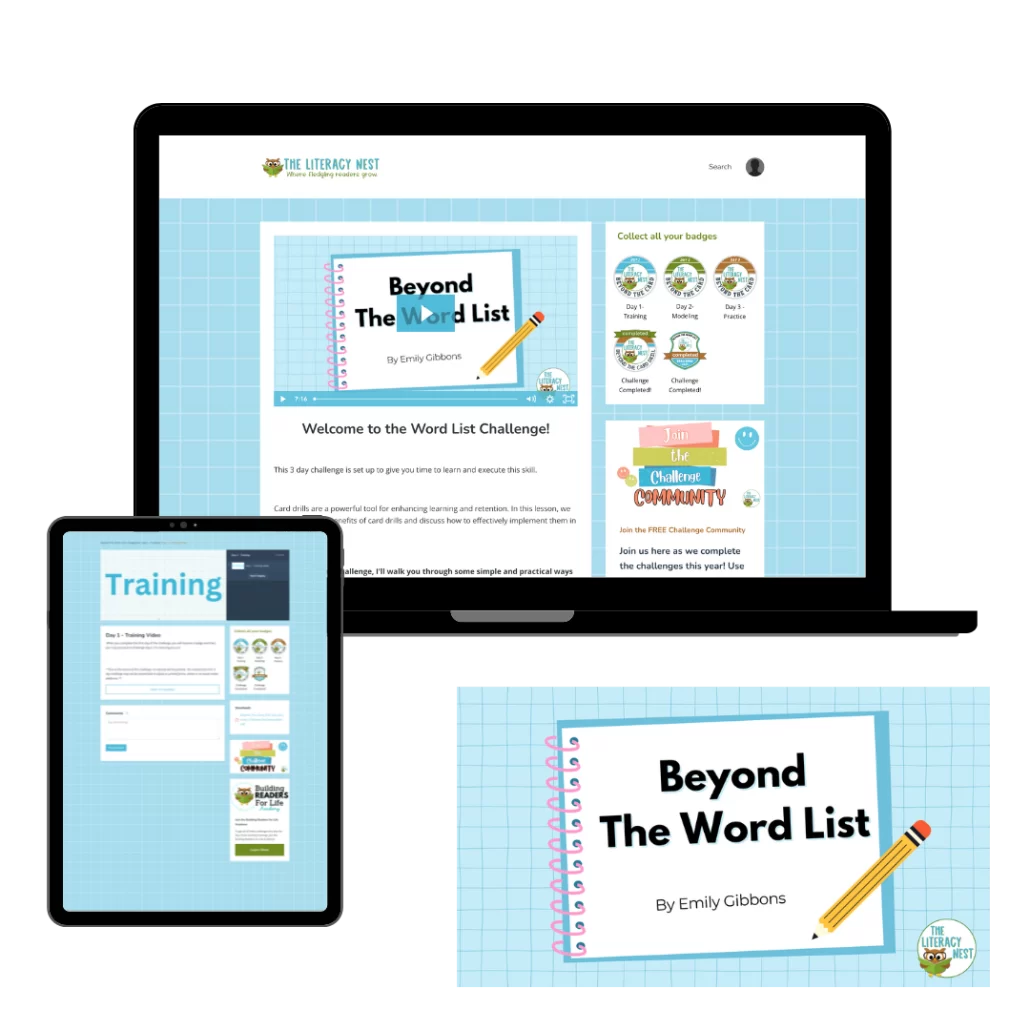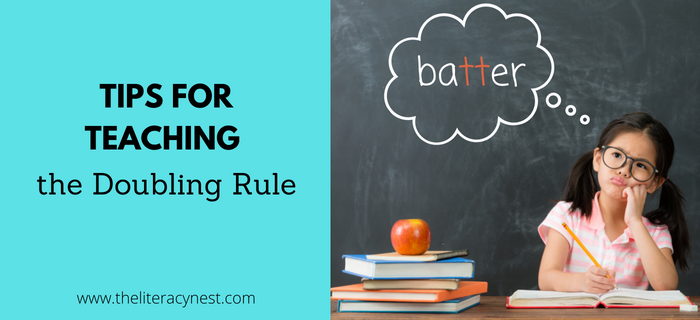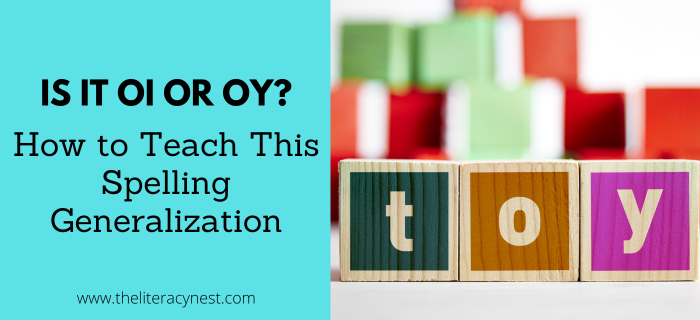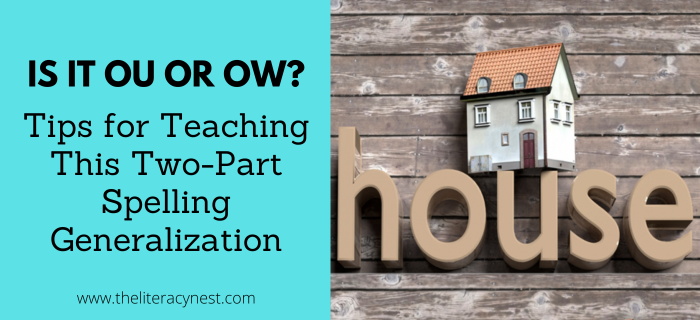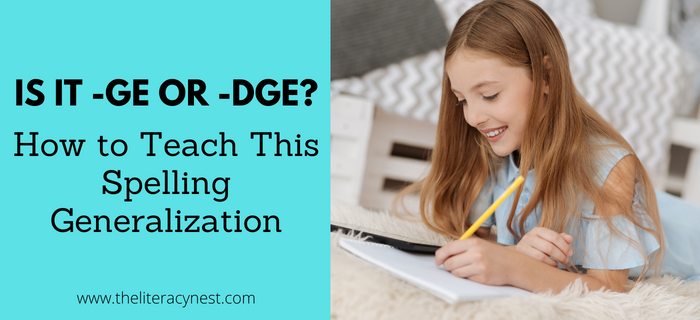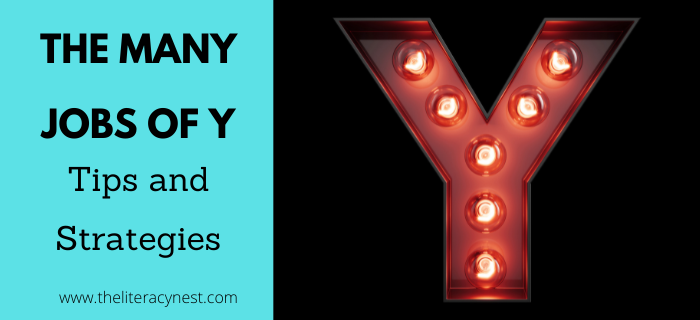R-Controlled Vowels: Strategies for Spelling /er/

Vowels followed by the letter r are strongly influenced in their sound by the r. It is no longer possible to pronounce a short or long vowel sound with the r. Instead, we have a vowel sound that is distorted and makes a new sound that is neither long nor short. These new sounds are referred to as r-controlled vowel sounds.
- The letters ar make the /ar/ sound as in car.
- The letters or make the /or/ sound as in horn.
These are straightforward. But where things get tricky are with er, ir, and ur. All three of these spellings make the /er/ sound. This leaves the young writer with some tricky spelling decisions to make.
Learn more about this syllable type by reading The Syllable Series: Part 3- The R Controlled Syllable!
What Makes R-Controlled Vowels Tricky?
There is very little to differentiate which spelling is correct, particularly in single-syllable words. In addition to the challenges of determining which spelling to use for /er/ in single-syllable words, it is just the tip of a complexity iceberg.
In addition to decision-making with er, ir, and ur in the middle of words, word endings have an extra layer of complexity. The number of spelling options for /er/ expand to include or as in doctor, ar as in dollar, ear as in pearl, ure as in treasure, and wor as in work. Even without the extra graphemes on the radar, this concept is partly tricky because all three spellings occur in many high-frequency common words. And to add a layer of difficulty there are also homophones such as fur and fir.
Tips for Spelling /er/
Despite all these challenges, there are a few guidelines that students may find helpful as well as some activities to build proficiency with the “triplets”. One of my students once referred to er, ir, and ur as the triplets and that name has stuck with me. It is a particularly helpful tool for aiding students in remembering the spelling possibilities when they hear the /er/ sound.
1. Frequency
Perhaps the most helpful guideline has to do with frequency. Er is by far the most common spelling for /er/ and that is even more true at the end of words. The next most frequent spelling is -ir followed by -ur. So, if students have no idea, they can use frequency to make an educated attempt.
2. Location
The suffix -er is very commonly used in comparison and when referring to a person who performs an action. As a side note, -or can also sound like /er/ as a suffix, but particularly for more beginner readers and writers, they are much more likely to encounter -er.
3. Characteristics
While there are no specific rules that guide which words are spelled with ur, or, and ir, there are some characteristics that words have in common.
- While all three spellings can occur at the middle or end of words, if you hear /er/ at the beginning of a word, it is more likely to be spelled ur as in urn, urge, or urgent.
- Number words such as first, third, and thirty use ir.
- Some nature words or words that would have very old origins such as bird, dirt, birth, and girl also use ir.
- Clothing items such as shirt, skirt use ir.
- Several ur words have to do with pain or medical issues. Hurt, burn, hurl, purple (the color of a bruise), nurse, burp, slur, and spur.
- Words such as twirl, whirl, and swirl all use ir, while the words curl, curve, and turn use ur. All are also connected by meaning.
Suggestions for Practice
The most successful technique I have found to help students with these words is to brainstorm a list of words one at a time for er, ir, and ur. Then I encourage students to either draw (or tell me what to draw) to connect the words in a memorable way. A silly sentence to help them remember is “Her bird burps.” For less silly versions: “Her bird turns.” or “Her bird is hurt.”
For example: the student might draw three birds where the first bird is twirling, and the third bird is sitting on dirt. The sillier the scene, the more memorable it is. If inclined, you can even tell a story utilizing the images. Reviewing the drawing and story repeatedly helps it to become more ingrained in student’s memories. Posting this on a bulletin board or keeping it in a student notebook as a reference tool has proven helpful for many students.
Doing this for ir and ur is more helpful than er, since er is kind of the default spelling. The activity is most useful with common high-use words.
Using r-controlled vowels in a variety of activities and in ways that emphasize the spelling is important practice. Drawing attention to the spelling with color coding, highlighting, and sorts helps to build familiarity and make students stronger in their control of these spellings. Activities such as clip cards and games like Pick a Pattern are also very valuable tools for building proficiency.
R-Controlled Vowels Games, Worksheets, and Activities
This BUNDLE has everything you need to teach R-Controlled Vowels. It’s great to use with Orton-Gillingham lesson plans, online tutoring, distance learning, and other reading interventions for multisensory phonetic awareness and development. It includes games, worksheets, and more fun activities your students will love!
You can grab it at The Literacy Nest Shop.
Beyond the Word List!
Beyond The Word List guides you to take a critical look at your word lists and carefully plan activities your students will love. This simple yet effective training will equip you with the training and the tools you need, provide you with a roadmap of ideas to guide you along the way and show you easy, low-prep examples to boost any word list into a language-building powerhouse.
What does the 3-day challenge look like? This is a fully asynchronous and virtual training. You can complete the 3-day challenge at your convenience. Day 1 is where your training kicks off. On day 2, you’ll watch the activities in action. And, on day 3 you’ll put what you’ve learned into practice by trying the activities yourself.
What teachers are saying:
“I completed last night’s challenge and that was so fun. I appreciate all the different ways that you explained how to change the card drill up with fun ideas. I became certified last year as an OG tutor, so I am still going by the exact process of my practicum. Having fun ideas is exciting for me. Thank you so much For all you do in the dyslexia tutoring community.” – Lisa M.
“I just finished Day 1 of the Card Drill Challenge and am so excited! I loved it and learned fun new ways to present this drill to my students. I can’t wait to see them modeled on Day 2. ? Your videos are very encouraging and always offer valuable ways to make my OG lessons more engaging, thank you!” – Beth F.
“I just completed the challenge. Easily doable in one sitting. Lots of great ideas, spurring on more already! Thanks! Highly recommend it!” – Becky D-M.
Join the 3-day challenge, here! Or, become a yearly member of the Building Readers for Life Academy to join in on all of our challenges!



